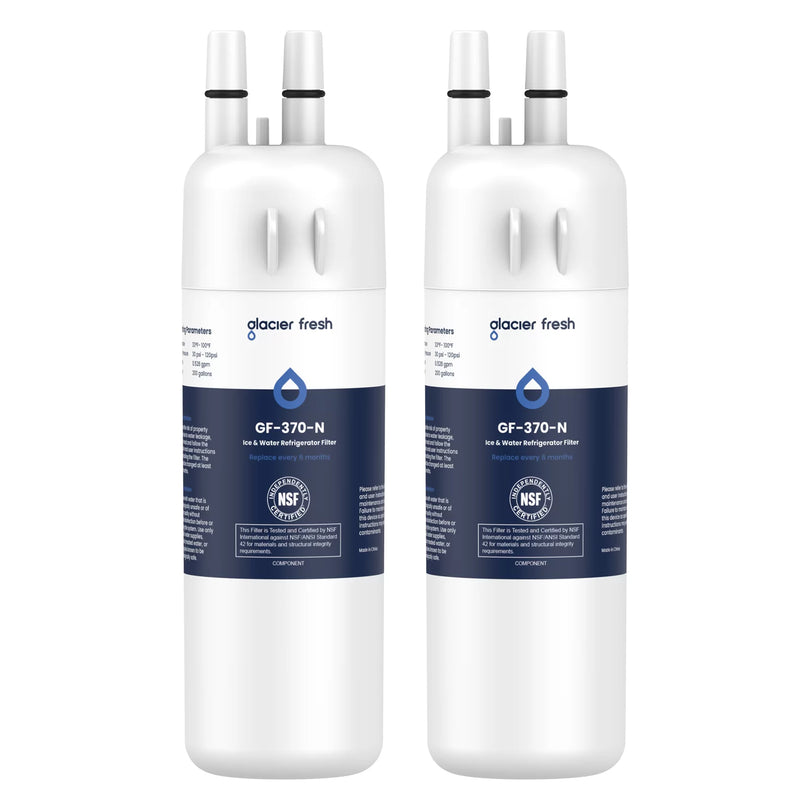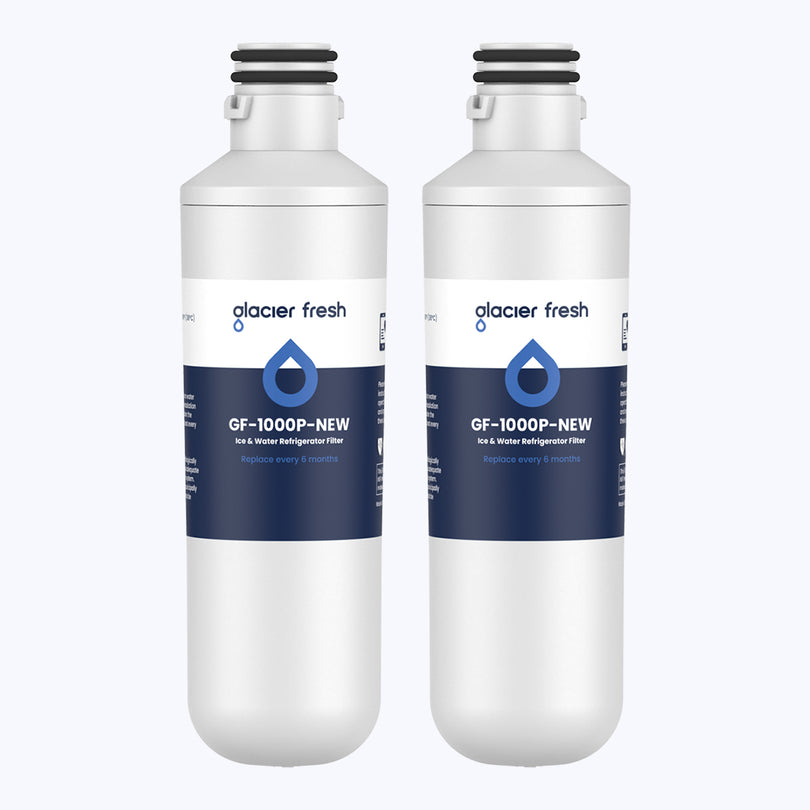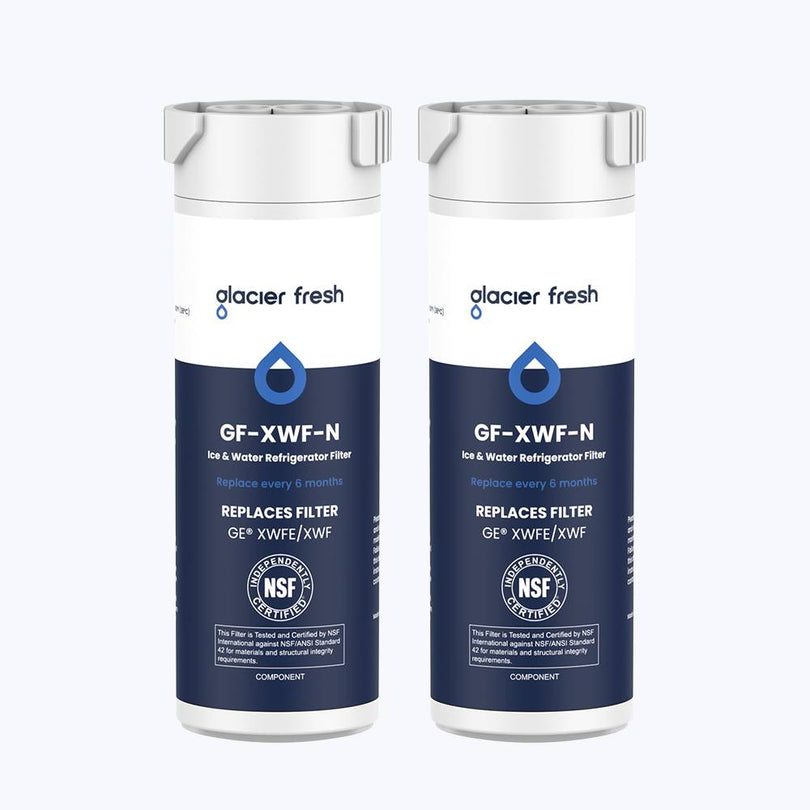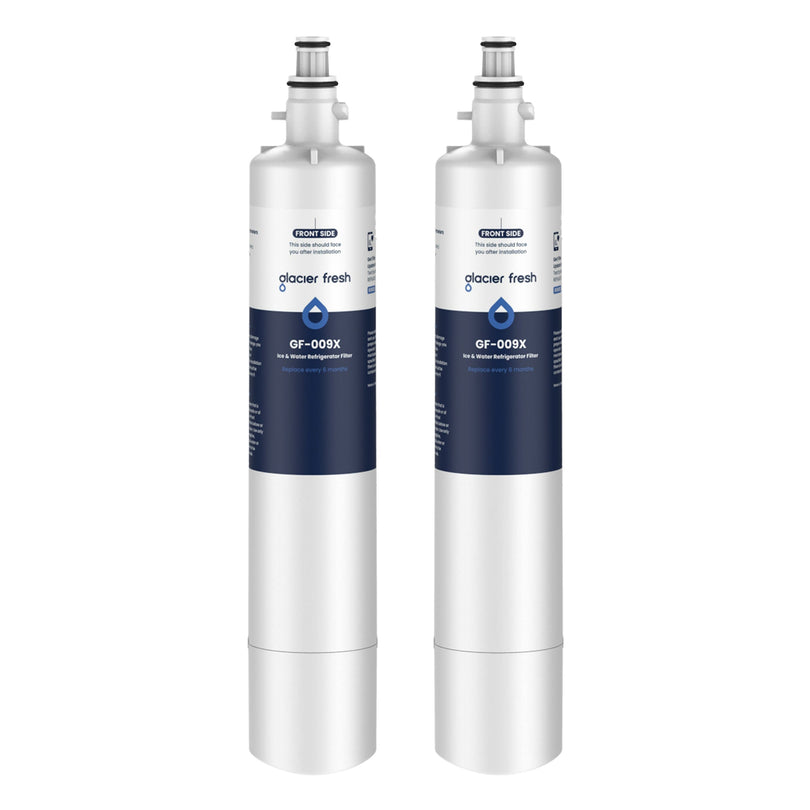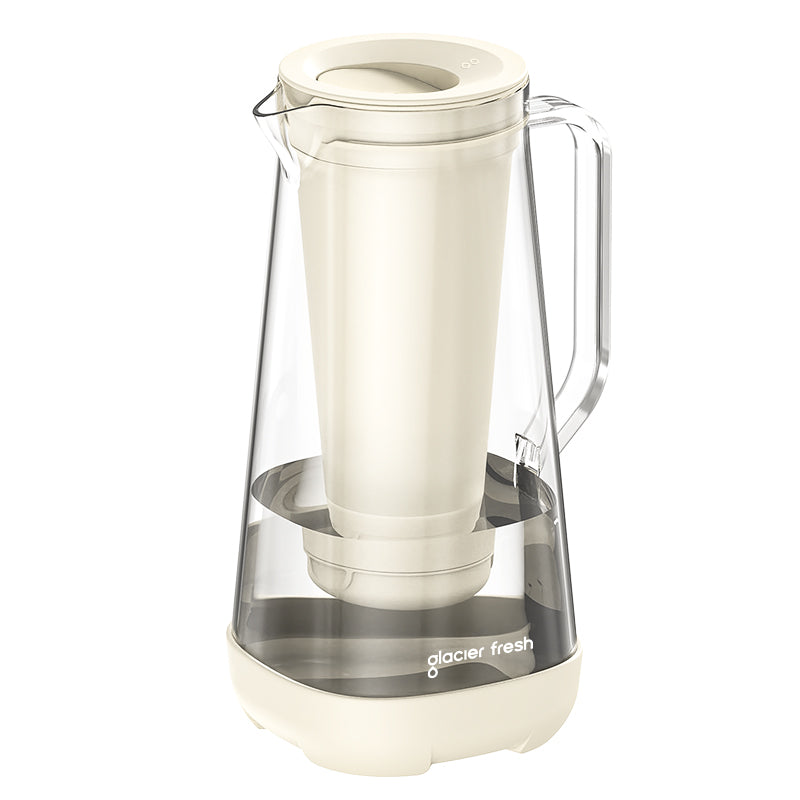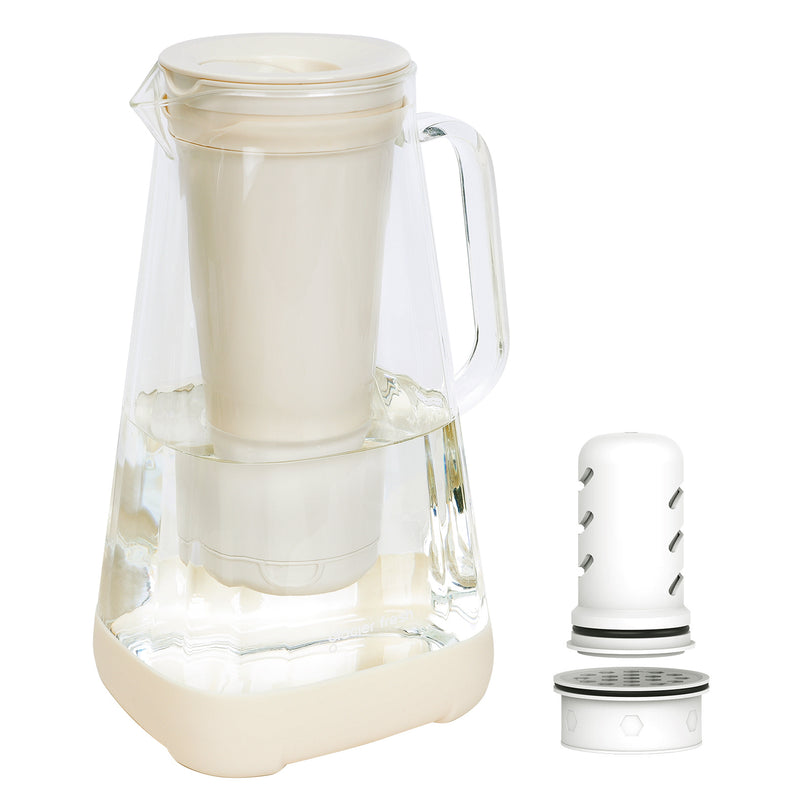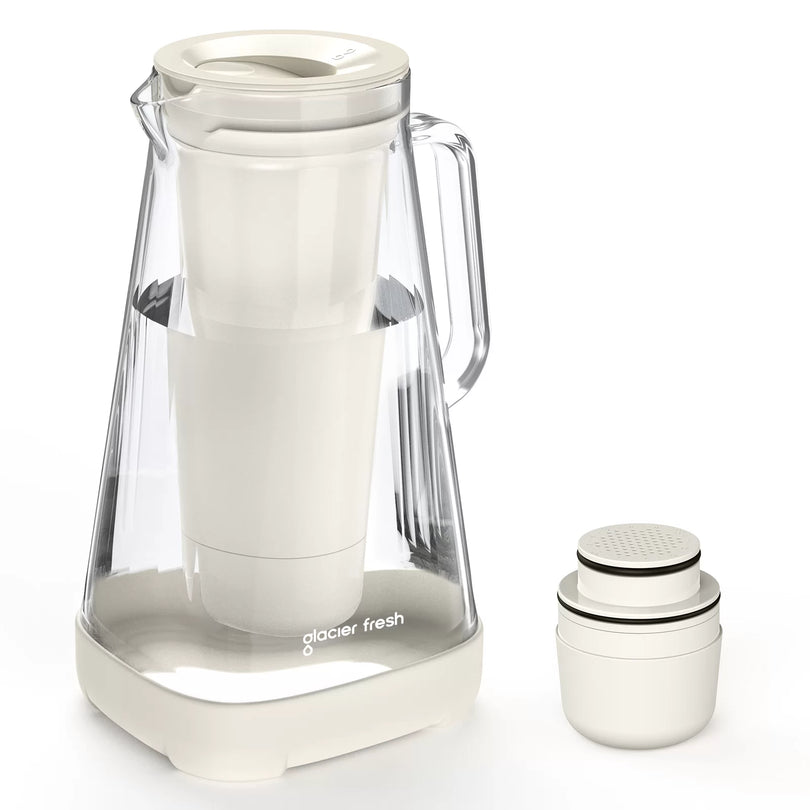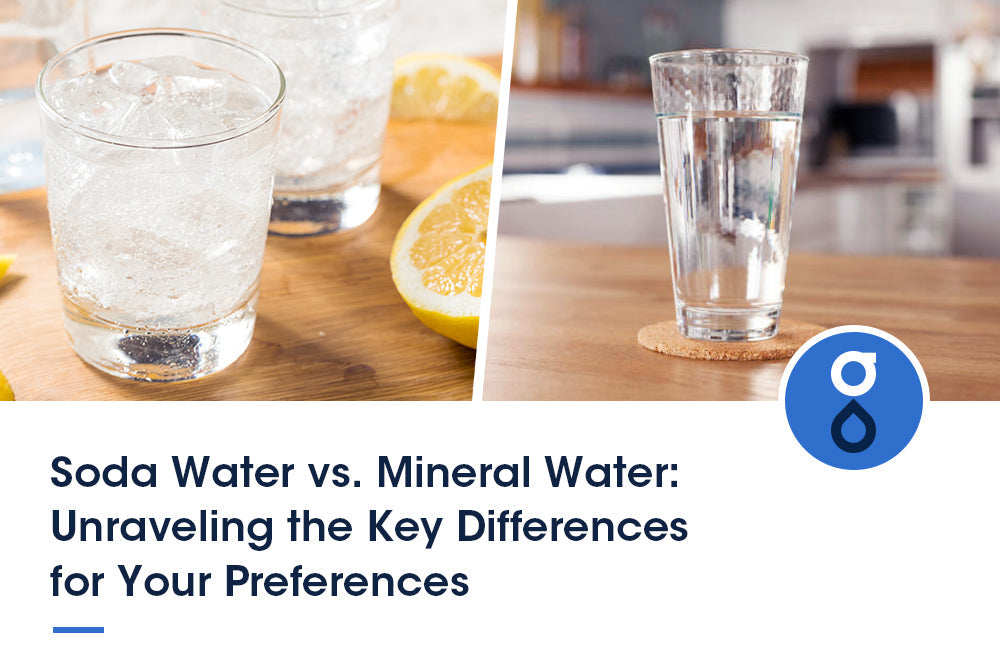Table of Contents:
Was sind Point-of-Entry-Wasserfiltersysteme
Arten von POE-Wasseraufbereitungssystemen
Vorteile eines POE-Wassersystems
POE VS POU: Die Unterschiede entschlüsseln
Faktoren bei der Auswahl eines POE-Systems
Tipps zur Installation und Wartung des POE-Systems
FAQs
Abschluss
Wenn Sie die Qualität Ihrer Hauswasserversorgung verbessern möchten, ist ein Point-of-Entry-Wasserfiltersystem (POE) die Lösung. POE-Systeme behandeln das Wasser direkt beim Zulauf und stellen sicher, dass das gesamte Wasser, das Sie zum Trinken, Kochen, Putzen und Baden verwenden, sauber, sicher und frei von Verunreinigungen ist.
Angesichts der großen Auswahl an POE-Systemen ist es jedoch oft schwierig, das richtige für Ihre Anforderungen zu finden. In diesem umfassenden Leitfaden erfahren Sie alles Wissenswerte über POE-Systeme – von ihrer Funktionsweise über ihre Vorteile bis hin zur Auswahl und Installation des richtigen Systems für Ihr Zuhause.
Was sind Point-of-Entry-Wasserfiltersysteme?

Wasserfiltersysteme am Eingang sind Wasserfiltersysteme für das gesamte Haus, die das Wasser direkt beim Zulauf filtern. Diese Systeme werden an der Hauptwasserleitung installiert und sind darauf ausgelegt, Schadstoffe, Chemikalien und Verunreinigungen aus der Wasserversorgung zu entfernen. Einer der Hauptvorteile eines Wasserfiltersystems am Eingang ist seine Effektivität. Im Gegensatz zu Point-of-Use-Systemen , die das Wasser nur an einer bestimmten Stelle filtern, filtern Point-of-Entry-Systeme das gesamte Wasser, das in Ihr Haus gelangt.
Das gesamte Wasser, das Sie zum Baden, Kochen und Putzen verwenden, wird gefiltert und sorgt so für sauberes und sicheres Wasser im ganzen Haus. Darüber hinaus entfernen Point-of-Entry-Systeme viele Schadstoffe wie Chlor, Blei, Pestizide und Bakterien hochwirksam.
Ein weiterer Vorteil von Wasserfiltersystemen am Entnahmeort sind ihre Kosten. Diese Systeme sind zwar zunächst teurer, auf lange Sicht jedoch in der Regel kostengünstiger. Dies liegt daran, dass sie weniger Wartung und Austausch erfordern als Systeme am Entnahmeort, bei denen möglicherweise mehrere Filter regelmäßig ausgetauscht werden müssen.
Darüber hinaus können Point-of-Entry-Systeme dazu beitragen, die Lebensdauer Ihrer Rohrleitungen und Geräte zu verlängern, indem sie die Ablagerung von Mineralien und Sedimenten in Ihrer Wasserversorgung reduzieren.
Arten von POE-Wasseraufbereitungssystemen
Sedimentfilter
Achten Sie auf die Bedeutung von Sedimentfiltern in Ihrem Wassereintrittssystem – sie sind die erste Verteidigungslinie gegen schädliche Verunreinigungen, die die Gesundheit Ihrer Familie gefährden können. Sedimentfiltrationstechniken entfernen alle physikalischen Verunreinigungen aus Ihrem Wasser, wie Sand, Schmutz und Rostpartikel. Diese Verunreinigungen können Probleme verursachen, darunter verstopfte Rohre, fleckige Wäsche und Geräteschäden.
Filtermedien sind ein wesentlicher Bestandteil von Sedimentfiltern. Je nach erforderlichem Filtrationsgrad werden unterschiedliche Materialien verwendet. Auch die Mikronzahl ist entscheidend, da sie die Größe der Partikel bestimmt, die der Filter erfassen kann. Die Rückspülung ist ein weiterer wichtiger Aspekt der Sedimentfiltration, da sie hilft, eingeschlossene Verunreinigungen zu entfernen und Verstopfungen vorzubeugen. Vorfiltrationsmethoden, wie z. B. die Verwendung eines Siebfilters, können ebenfalls die Lebensdauer Ihres Sedimentfilters verlängern. Insgesamt sind Sedimentfilter für jedes Point-of-Entry-System unverzichtbar und sollten bei der Planung von Wasseraufbereitungslösungen berücksichtigt werden.
UV-Reinigungssysteme
UV-Reinigungssysteme sind eine leistungsstarke und effektive Methode, um sicherzustellen, dass Ihr Trinkwasser frei von schädlichen Bakterien und Viren ist. Im Gegensatz zu Sedimentfiltern, die nur physikalische Verunreinigungen aus dem Wasser entfernen, zielt die UV-Sterilisation auf krankheitserregende Mikroorganismen ab. Dies wird durch die Bestrahlung des Wassers mit ultraviolettem Licht erreicht, das die DNA von Bakterien und Viren schädigt und sie so inaktiv macht und ihre Vermehrung verhindert.
Bei der Auswahl von UV-Reinigungssystemen ist ein Vergleich ihrer Wirksamkeit mit anderen Wasseraufbereitungsmethoden unerlässlich. Die UV-Sterilisation ist zwar hochwirksam gegen Mikroorganismen, entfernt jedoch keine Chemikalien oder Mineralien aus dem Wasser. M
Wartungsanforderungen und Installationsüberlegungen sollten ebenfalls berücksichtigt werden. UV-Lampen müssen regelmäßig ausgetauscht werden, und das System muss korrekt installiert sein, um ordnungsgemäß zu funktionieren. Auch eine Kostenanalyse sollte berücksichtigt werden. UV-Systeme können teurer sein als andere Point-of-Entry-Systeme, aber der zusätzliche gesundheitliche Nutzen kann die Kosten rechtfertigen.
RO-Systeme für das ganze Haus

Im Gegensatz zu UV-Reinigungssystemen verwendet die Umkehrosmoseanlage für das ganze Haus einen Filterprozess, der Verunreinigungen aus Ihrer Wasserversorgung entfernt. Dieser Prozess wird Umkehrosmose genannt und funktioniert, indem Wasser durch eine halbdurchlässige Membran gepresst wird, die Verunreinigungen wie Blei, Chlor und Bakterien zurückhält. Das Ergebnis ist sauberes, reines Wasser, das zum Trinken, Kochen und Baden geeignet ist. In Bezug auf die Filtereffizienz gehören Umkehrosmoseanlagen für das ganze Haus zu den besten auf dem Markt.
Sie können bis zu 99 % der Verunreinigungen entfernen und sind daher ideal für Haushalte, die Wert auf ihre Wasserqualität legen. Diese Filterleistung hat jedoch ihren Preis, und die Wartung von RO-Systemen für das ganze Haus kann teuer sein. Der Installationsprozess ist zudem komplizierter als bei anderen Filtersystemen, und es wird empfohlen, einen Fachmann mit der Installation zu beauftragen.
Wasserenthärtungsanlagen
Wasserenthärtungsanlagen, wie z. B. Kalzium- und Magnesiumenthärter, entfernen Mineralien und Ionen, die das Wasser hart machen. Zu den Vorteilen einer Wasserenthärtungsanlage gehören weichere Haut und Haare, saubereres Geschirr und sauberere Kleidung sowie weniger Kalkablagerungen in Rohren und Geräten. Zur Wartung ist es wichtig, den Salzbehälter regelmäßig zu reinigen und aufzufüllen sowie das Salz bei Bedarf auszutauschen. Es wird außerdem empfohlen, die Anlage mindestens einmal jährlich von einem Fachmann überprüfen und warten zu lassen.
Die Installation einer Wasserenthärtungsanlage ist zwar möglich, Sie sollten jedoch einen Fachmann hinzuziehen, um eine ordnungsgemäße Installation zu gewährleisten. Die Kostenanalyse hängt von der Größe und Art der gewählten Anlage ab. Wichtig ist jedoch, die langfristigen Einsparungen bei Geräten und Sanitärreparaturen zu berücksichtigen.
Brunnenwasserfiltersysteme
Wenn Sie Brunnenwasser verwenden, sollten Sie die Installation eines Filtersystems in Erwägung ziehen, um Verunreinigungen und Schadstoffe zu entfernen. Vor der Installation eines Filtersystems müssen Sie Ihr Brunnenwasser testen, um festzustellen, welche Schadstoffe in welcher Konzentration vorhanden sind. Dies hilft Ihnen bei der Auswahl geeigneter Filtermedien, um die Schadstoffe in Ihrem Brunnenwasser effektiv zu entfernen. Zu den häufigsten Schadstoffen in Brunnenwasser gehören Bakterien, Viren, Schwermetalle und Pestizide.
Je nach Art und Grad der Verunreinigungen in Ihrem Brunnenwasser müssen Sie möglicherweise ein spezielles Filtermedium wählen. Berücksichtigen Sie auch die Durchflussrate Ihres Brunnenwassers und wählen Sie ein Filtersystem, das dieser Rate gerecht wird, um einen konstanten Wasserdruck zu gewährleisten. Schließlich ist die Einhaltung der Wartungsanforderungen, einschließlich des regelmäßigen Filterwechsels und der Reinigung des Systems, unerlässlich, um die Sauberkeit und Sicherheit Ihres Brunnenwassers zu gewährleisten.
Vorteile eines POE-Wassersystems

Sie werden die Vorteile eines POE-Wassersystems lieben! Es ist vor allem eine kostengünstige Lösung zur Wasserfilterung im gesamten Haus. Anstatt für jeden Wasserhahn oder jedes Gerät einen eigenen Filter zu kaufen, filtert ein Point-of-Entry-System das gesamte Wasser, das in Ihr Haus gelangt. Das bedeutet, dass Sie langfristig Geld für Filter und Ersatzkartuschen sparen. Ein POE-Wassersystem ist nicht nur kostengünstig, sondern verbessert auch Ihre Gesundheit. Durch die Entfernung schädlicher Verunreinigungen aus Ihrer Wasserversorgung reduzieren Sie das Risiko, Giftstoffe aufzunehmen, die zu Krankheiten führen können.
Darüber hinaus erleichtert die ständige Verfügbarkeit von sauberem Wasser im ganzen Haus die Flüssigkeitszufuhr und fördert das allgemeine Wohlbefinden. Ein POE-Wassersystem ist eine praktische und umweltfreundliche Lösung. Sie müssen sich nicht ständig um den Filterwechsel oder das Schleppen schwerer Wasserflaschen kümmern. Darüber hinaus reduziert ein Point-of-Entry-System Plastikmüll und schont die Umwelt. Mit langfristigen Einsparungen, verbesserter Gesundheit und Komfort ist ein POE-Wassersystem eine intelligente Investition für jedes Zuhause.
POE VS POU: Die Unterschiede entschlüsseln

POE steht für Point of Entry (Eintrittspunkt), POU für Point of Use (Verwendungspunkt). POE-Wassersysteme werden dort installiert, wo das Wasser in ein Gebäude eintritt, während POU-Systeme an der Verwendungsstelle installiert werden, beispielsweise unter einem Waschbecken oder auf einer Arbeitsplatte. Ein wesentlicher Unterschied zwischen POE- und POU-Wassersystemen liegt in der Filtermethode. POE-Systeme verwenden in der Regel größere Filter und können größere Wassermengen verarbeiten. Daher eignen sie sich ideal für die Filterung des Wassers im gesamten Gebäude. POU-Systeme hingegen verwenden kleinere Filter und sind für die Filterung von Wasser an einem bestimmten Ort, beispielsweise einer Küchenspüle oder Dusche, konzipiert.
Ein weiterer wesentlicher Unterschied ist der Wasserdruck. POE-Systeme können hohen Wasserdruck bewältigen, was für größere Gebäude mit mehreren Wasserauslässen unerlässlich ist. POU-Systeme sind jedoch durch den Wasserdruck im Installationsbereich begrenzt, was ihre Wirksamkeit beeinträchtigen kann. Im Kostenvergleich sind POE-Systeme aufgrund ihrer Größe und des Installationsaufwands im Allgemeinen teurer, während POU-Systeme günstiger und einfacher zu installieren sind.
Um das richtige System für Ihre Bedürfnisse zu finden, ist es wichtig, die Unterschiede zwischen POE- und POU-Wassersystemen zu verstehen. POE-Systeme eignen sich ideal für größere Gebäude mit hohem Wasserdruck, während POU-Systeme besser für bestimmte Standorte geeignet sind und günstiger sind. Berücksichtigen Sie bei der Auswahl des richtigen Wassersystems für Ihr Zuhause oder Ihr Unternehmen die Filtermethode, den Wasserdruck und den Installationsprozess.
Faktoren bei der Auswahl eines POE-Systems
Kapazitätsanforderungen
Um sicherzustellen, dass Ihr Zugangssystem den Verkehrsfluss bewältigen kann, ist es wichtig, die Kapazitätsanforderungen zu berücksichtigen. Durchflussrate und Systemgröße sind zwei wichtige Faktoren. Die Durchflussrate gibt die Wassermenge an, die pro Minute durch das System fließt, während die Systemgröße die physische Größe des Systems angibt. Die Wahl der richtigen Größe und Durchflussrate ist basierend auf Ihren Nutzungsgewohnheiten und Ihrem Wasserbedarf entscheidend. Wenn Sie beispielsweise eine große Familie haben oder viel Wasser zur Bewässerung verbrauchen, benötigen Sie ein größeres System mit einer höheren Durchflussrate.
Wasserqualität

Die Gewährleistung der Wasserqualität ist für eine gesunde und sichere Umwelt für Sie und Ihre Familie unerlässlich. Die Wasserfilterung ist ein wichtiger Aspekt zur Aufrechterhaltung der Wasserqualität. Dabei werden Schadstoffe und Verunreinigungen wie Sedimente, Chlor und andere Schadstoffe aus dem Wasser entfernt. Dieser Prozess ist entscheidend für die sichere Verwendung und den sicheren Genuss Ihres Wassers.
Eine beliebte Methode zur Wasserfilterung ist die Umkehrosmose. Dabei wird Wasser durch eine halbdurchlässige Membran gepresst, wodurch Verunreinigungen und Schadstoffe entfernt werden. Ein weiterer wichtiger Aspekt der Wasserqualität ist der ausgeglichene pH-Wert. Wasser mit einem ausgeglichenen pH-Wert ist weniger korrosiv und kann Schäden an Rohren und Geräten vorbeugen. Auch die Reduzierung des Chlorgehalts ist wichtig, da dieser den Geschmack und Geruch des Wassers beeinflussen kann.
Installation und Wartung
Bei der Installation empfiehlt es sich immer, einen Fachmann zu beauftragen, um die korrekte Platzierung und Funktionalität sicherzustellen. Eine professionelle Installation erspart Ihnen später Ärger und kostspielige Reparaturen. Darüber hinaus ist es wichtig, bei der Installation die Anweisungen des Herstellers zu befolgen, um einen reibungslosen Betrieb des Systems zu gewährleisten.
Nach der Installation des Zugangssystems ist eine kosteneffiziente Wartung unerlässlich, um einen effizienten Betrieb zu gewährleisten. Dazu gehören regelmäßige Reinigungsverfahren, Tipps zur Fehlerbehebung und bei Bedarf Ersatzteile. Kümmern Sie sich darum, bevor es zu Problemen kommt – regelmäßige Wartung kann größere Probleme verhindern.
Marke und Ruf
Um ein zuverlässiges Zugangssystem zu gewährleisten, ist die Suche nach namhaften Marken mit nachgewiesener Erfolgsbilanz bei der Bereitstellung von sauberem und sicherem Wasser erforderlich. Die Markenwahrnehmung spielt eine wichtige Rolle für das Vertrauen der Verbraucher. Daher sind Marketingstrategien und Reputationsmanagement für Unternehmen dieser Branche von entscheidender Bedeutung.
Kunden verbinden den Ruf einer Marke oft mit der Gesamtqualität ihrer Produkte und Dienstleistungen. Daher ist es für Unternehmen unerlässlich, die Kundenzufriedenheit in den Vordergrund zu stellen. Kundenbewertungen und -beurteilungen sind eine Möglichkeit, den Ruf einer Marke einzuschätzen. Positives Feedback zufriedener Kunden stärkt das Vertrauen und die Glaubwürdigkeit einer Marke, während negative Bewertungen ihrem Ruf schaden können.
Tipps zur Installation und Wartung des POE-Systems
Um Ihr POE-System optimal zu nutzen, sollten Sie es ordnungsgemäß installieren und warten. Beachten Sie die folgenden Installationstipps:
- Bestimmen Sie zunächst den besten Standort für Ihr POE-System und stellen Sie sicher, dass es leicht zugänglich ist.
- Zweitens: Stellen Sie sicher, dass das System sauber, trocken und gut belüftet installiert wird.
- Drittens: Verwenden Sie hochwertige Kabel und Anschlüsse, um eine ordnungsgemäße Konnektivität zu gewährleisten.
Wartungstricks sind ebenfalls wichtig, um sicherzustellen, dass Ihr POE-System immer einwandfrei funktioniert. Hier sind einige Tipps:
- Überprüfen Sie zunächst das System regelmäßig auf Anzeichen von Schäden oder Verschleiß.
- Zweitens: Reinigen Sie das System regelmäßig, um die Ansammlung von Staub und Schmutz zu verhindern.
- Drittens: Aktualisieren Sie die Firmware und Software des Systems, um sicherzustellen, dass es immer auf dem neuesten Stand ist und effizient läuft.
Sollten Probleme auftreten, kann eine praktische Anleitung zur Fehlerbehebung sehr hilfreich sein. Diese Anleitung sollte Anweisungen zur Diagnose und Behebung häufiger Probleme enthalten, darunter Verbindungs-, Stromversorgungs- und Softwareprobleme.
Nicht zuletzt sind Kostenüberlegungen und Effizienzsteigerungen entscheidend für die Effektivität und Kosteneffizienz Ihres POE-Systems. Erwägen Sie die Investition in energieeffiziente Geräte und überprüfen Sie regelmäßig Ihren Energieverbrauch, um Einsparpotenziale zu identifizieren.
FAQs
Wie hoch ist die durchschnittliche Lebensdauer eines POE-Systems?
Die durchschnittliche Lebensdauer eines POE-Systems hängt von Faktoren wie Nutzung, Wartung und Qualität der Komponenten ab. Ein gut gewartetes System kann jedoch bis zu 10 Jahre oder länger halten.
Können POE-Systeme an spezifische Wasseraufbereitungsanforderungen angepasst werden?
Ja, POE-Systeme können an spezifische Wasseraufbereitungsanforderungen angepasst werden. Dies ermöglicht maßgeschneiderte Lösungen für unterschiedliche Wasserquellen und Verunreinigungen und gewährleistet eine optimale Filtration und Wasserqualität.
Ist es möglich, ein POE-System in ein vorhandenes Sanitärsystem zu integrieren?
Die Integration eines POE-Systems in ein bestehendes Sanitärsystem ist möglich, erfordert jedoch möglicherweise einige Anpassungen. Wenden Sie sich am besten an einen Fachmann, um eine ordnungsgemäße Installation sicherzustellen und potenzielle Probleme zu vermeiden.
Abschluss
Zusammenfassend lässt sich sagen, dass die Investition in ein POE-System kostengünstige und umweltfreundliche Vorteile bietet, wie z. B. die Reduzierung von Plastikmüll und die Entfernung schädlicher Verunreinigungen aus Ihrem Wasser. Die Bedeutung eines POE-Systems kann nicht genug betont werden, insbesondere wenn es um die Gesundheit und das Wohlbefinden Ihrer Familie geht. Die Investition in ein POE-System stellt sicher, dass Ihr Wasser zum Trinken, Kochen und Baden sicher und sauber ist. Folgen Sie Glacier Fresh, um weitere Wasserfilterlösungen zu entdecken.

